The vision for Happy Dog involves bringing the landowners together to pursue a design that overlaps properties, focusing on the lay of the land rather than property boundaries. By doing this, each property will complement the neighbor’s, adding to the overall productivity of the land. This should result in higher yields for everyone involved.
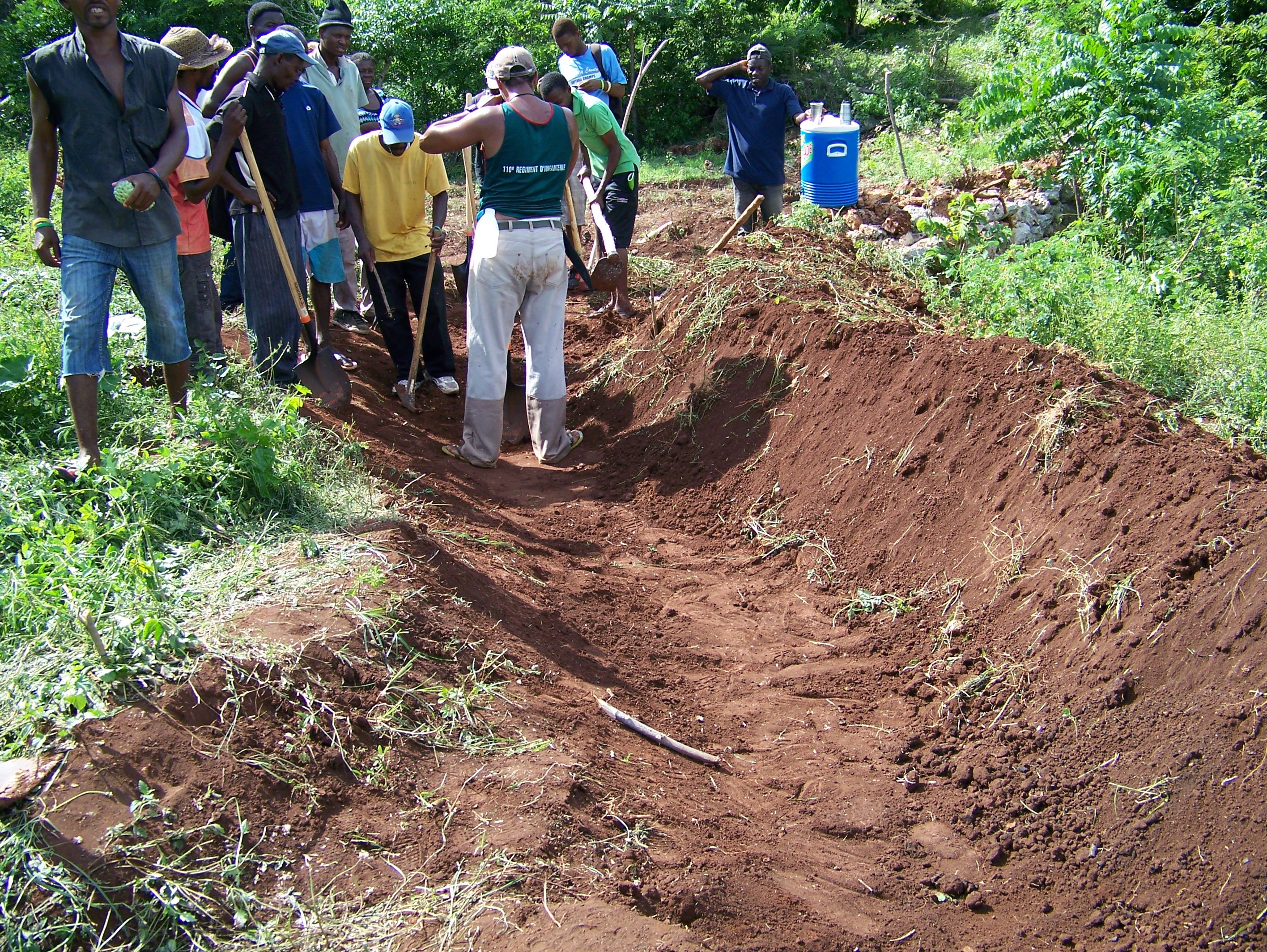
Today we’ll look at some ideas of what can be done to truly set the land on a regenerative trajectory. This will be done with a goal of maximum yield, complementary planting, improving soil conditions, providing healthy crops and eventually resulting in profitability.
Tomorrow I’ll focus composting and dealing with organic waste by products in a regenerative way. Then we’ll take a look at the business aspect of this idea.
Water
We’ve discussed the climate and geography quite a bit already, as well as water. Here we want to really get an idea of what can be done to hold the water. If some of this doesn’t make sense to you, please go back to Part 7 to understand more about how to manage water. We also discuss the need to start at the top in the early articles of this series.
It’s fairly straight forward to discern our starting points when it comes to laying out our patterns. This doesn’t mean that the pattern is straight forward, though establishing the starting point is certainly helpful.
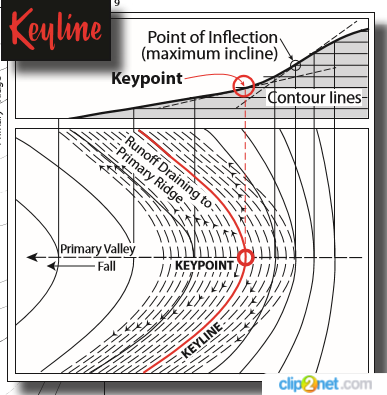
The keypoint is basically the point at which the valley begins to flatten out enough so that sediment begins accumulating in the channel. It’s the point at which the steepness gives way to a notably more gradual slope. It is from this point that our rows will begin taking shape, moving upward and downward. Each successive line in either direction will then be parallel (according to the lay of the land), rather than focusing on contour, as much as the lay of the land will permit. We usually have to deviate some for the irregularities that are part of most landscapes.
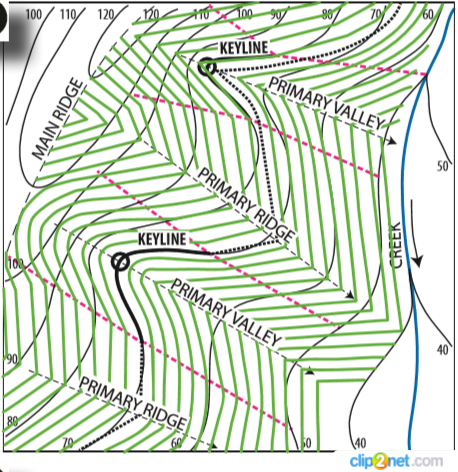
By establishing our pattern this way, any movement of moisture other than what is caught in our channels will tend to be toward the ridges. It’s not really that we’re forcing it so much as that any excess will sheet over sills that are developed along the ridges. This will help assure that major water flows do not congregate in the channels, causing erosion. It also helps to build up top soil as any sediment is captured and contained up high.
One caution for those who really love permaculture – the swale is not a panacea. They can be awesome. However, they can also result in disaster. Every tool has its place. The place for swales is not on steep terrain. But we do want to use them when it’s prudent.
Another option is a conservation ditch. The main difference is that we pull soil downhill to mound up on the lower side of the ditch to form a swale. They’re generally on contour, or perhaps with a very gradual grade. The idea is to keep the water in the ditch, so that it seeps into the soil.
Conservation ditches, on the other hand, do not mound soil on the downhill side. The channel is dug on contour (or keyline), so that if it fills up then the overflow gently sheets over the downhill side. The reason this is safer is because it doesn’t dam the water. If a swale is full of water and the mounded soil gives way, it can cause a mess as the water accelerates through the opening, gathering force, carrying debris, eroding and impacting whatever is downhill, potentially with enough force to cause damage. So on steeper terrain, we may choose to use conservation ditches, or other tools at our disposal (check dams, gabions, one rock dams, etc).

Liberation Ecology
Below both is a good place to plant a tree line. This accomplishes a couple of things. One, the trees are naturally watered by the ditches above them, since the water will tend to plume under the ditch. Two, the trees will stabilize the soil below the ditch as well as help build up the grade against erosion and for accumulating sediment that might find its way over the ditches.
The best source of drinking water, in the absence of good wells and springs, is what comes off the rooftops. By using a good well sealed cistern with a first-flush system, clean water can be gathered from rooftops and stored for long periods of time. While I’ve seen a few cisterns on the island, the roofs of such structures were not conducive to maintaining healthy drinking water. This wouldn’t be too difficult to remedy, though the expense of getting the supplies to Happy Dog might prove somewhat challenging.
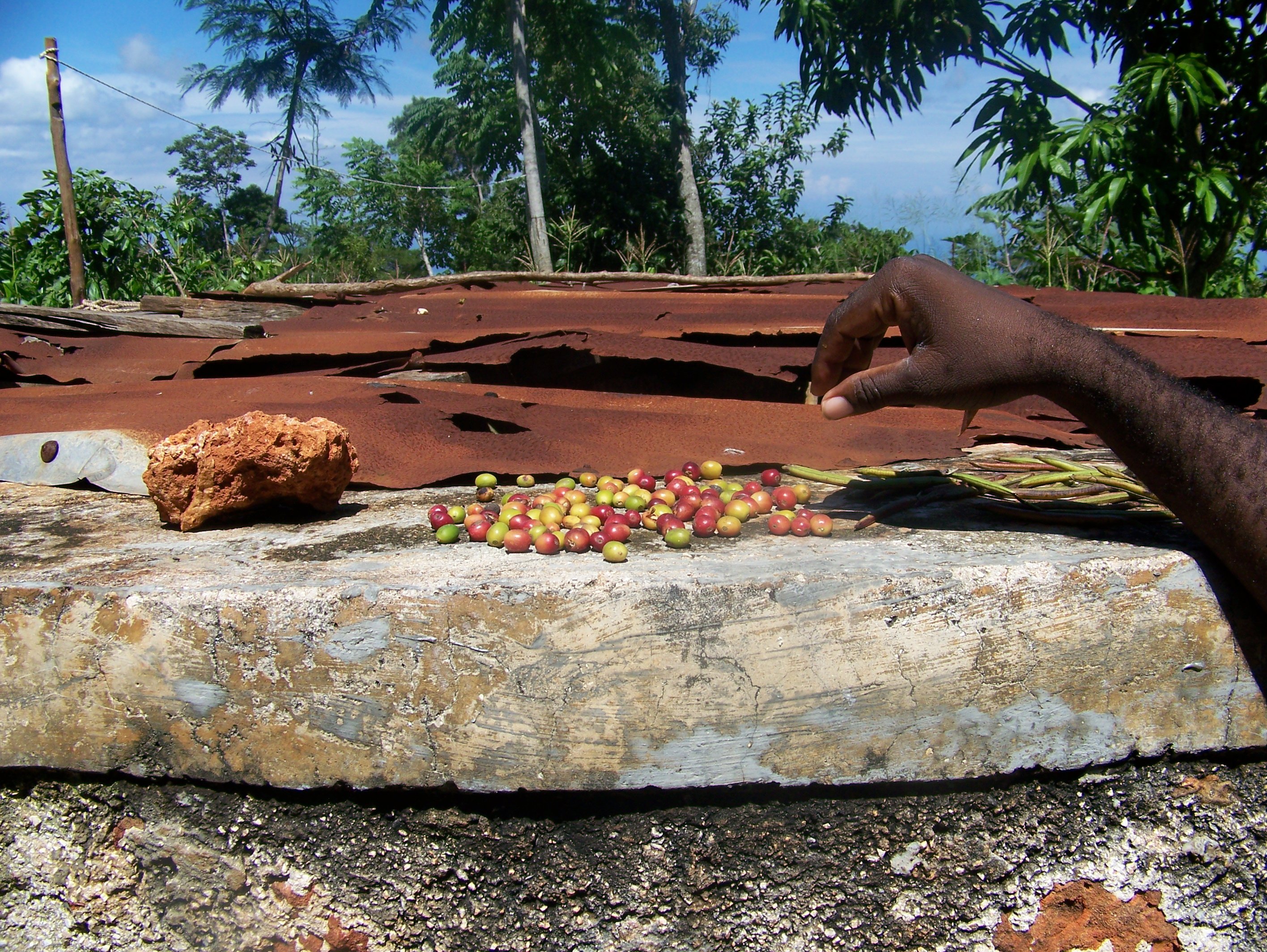
Coffee berries drying on the edge of a cistern. Notice the openings in the roof, allowing for bird droppings and the sun to promote potentially harmful organisms in the water.
During my entire time in Haiti, the only water I remember drinking came from a bottle. Here I am in the American southwest, one of the drier areas of the world with less than 10” of rain per year, and I can turn a faucet and get (arguably) passable drinking water. Yet in an area that gets more than five times as much rain, drinking water can be difficult to come by. Locals have some resistance to local organisms, but still suffer illness from the local water.
As a note, I’m hoping to be able to bring a Big Berkey water purifier with me on my next trip, to leave at Happy Dog. It should be possible to set it up to receive water from a cistern for locals to drink from. Of course, it will help visitors to survive a trip to Happy Dog without the concern of carrying gallons of bottled water or the digestive issues that can arise from drinking from local water sources.
Shelter Belts
In some cases it may be important to attempt to give the land some relief from prevailing winds. One of the best tools for this is the shelter belt. For maximum efficiency, these should be established with a gradual rising of the canopy top at 60 degrees, and with successive lines of trees filling the gaps of those on either side. By using this strategy, the land on the leeward side is protected for about three times the distance of the tallest line of trees in the shelter belt. This will help protect crops from the damage high winds can cause.

These shelter belts can be any type of tree. Sometimes coppice trees might be used, depending on the goals. You plant the tallest ones in the middle, or on the leeward edge, with the smallest along the edges, or on the windward edge. We might start with shrubs along the leading edges for even more buffer.
Besides the fruit and nuts provided, a great degree of litter will form beneath these belts, offering more organic nutrients for the soil. Often these areas are wonderful for mushrooms and other light sensitive understory crops. Sometimes it’s a good place to grow timber species as well, selectively harvesting as the canopy matures and grows dense. Keep in mind that where five trees offer good coverage when young, only three are needed when more mature.
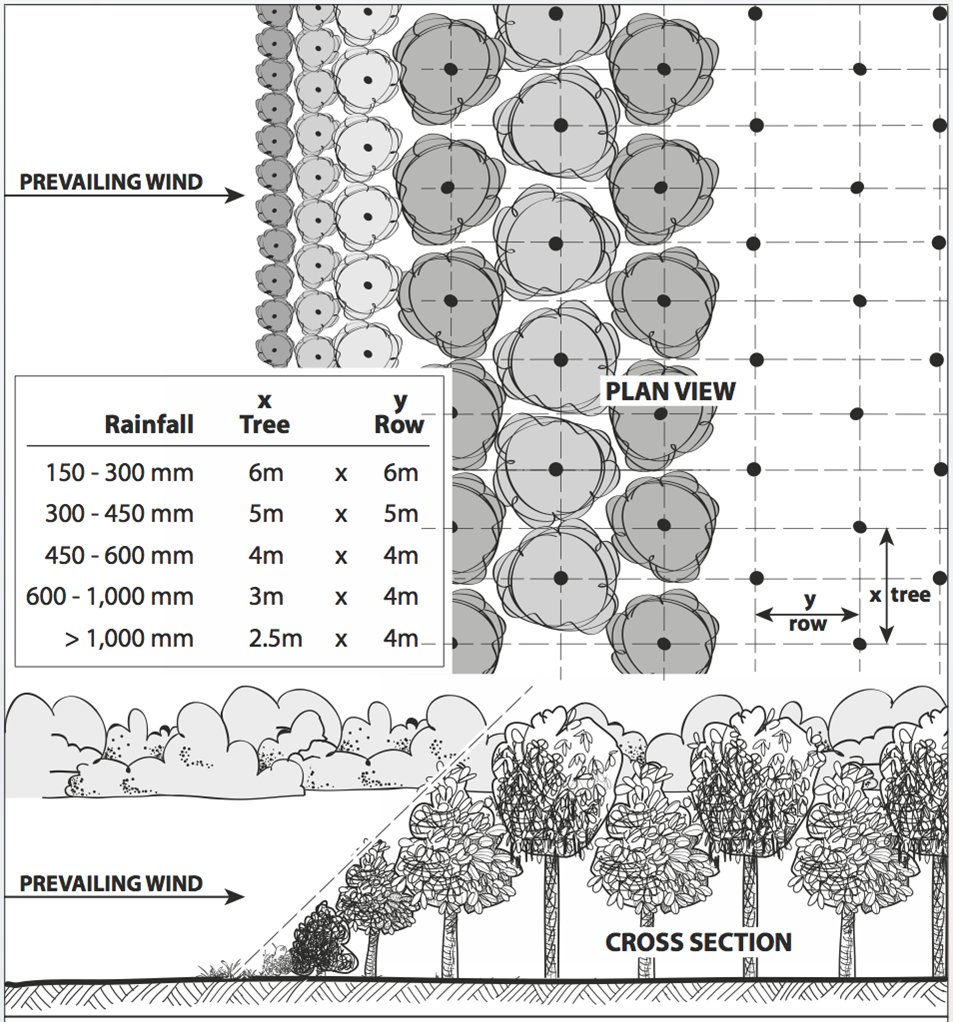
Haiti offers an abundance of options for trees, so there is no concern in regard to if they can be located. The focus will be on attempting to establish which ones tick the most boxes in any given order. Mangoes (several species), coconuts, avocados (several species), abricot (mamee apple – very tasty and might make an awesome unique export), moringa, sugar apple, coffee and guava come to mind immediately. Brazil nut and cacao might do well there, though I’m not sure if they’re already present or if it would be a good idea to introduce them. Moringa grows very rapidly and is incredibly resilient, so might be a good first species, with plans to thin drastically as others mature. It has market potential too, so would have to be evaluated. Bamboo can be a good nursery crop too, providing shelter for saplings until they can stand against the elements on their own.
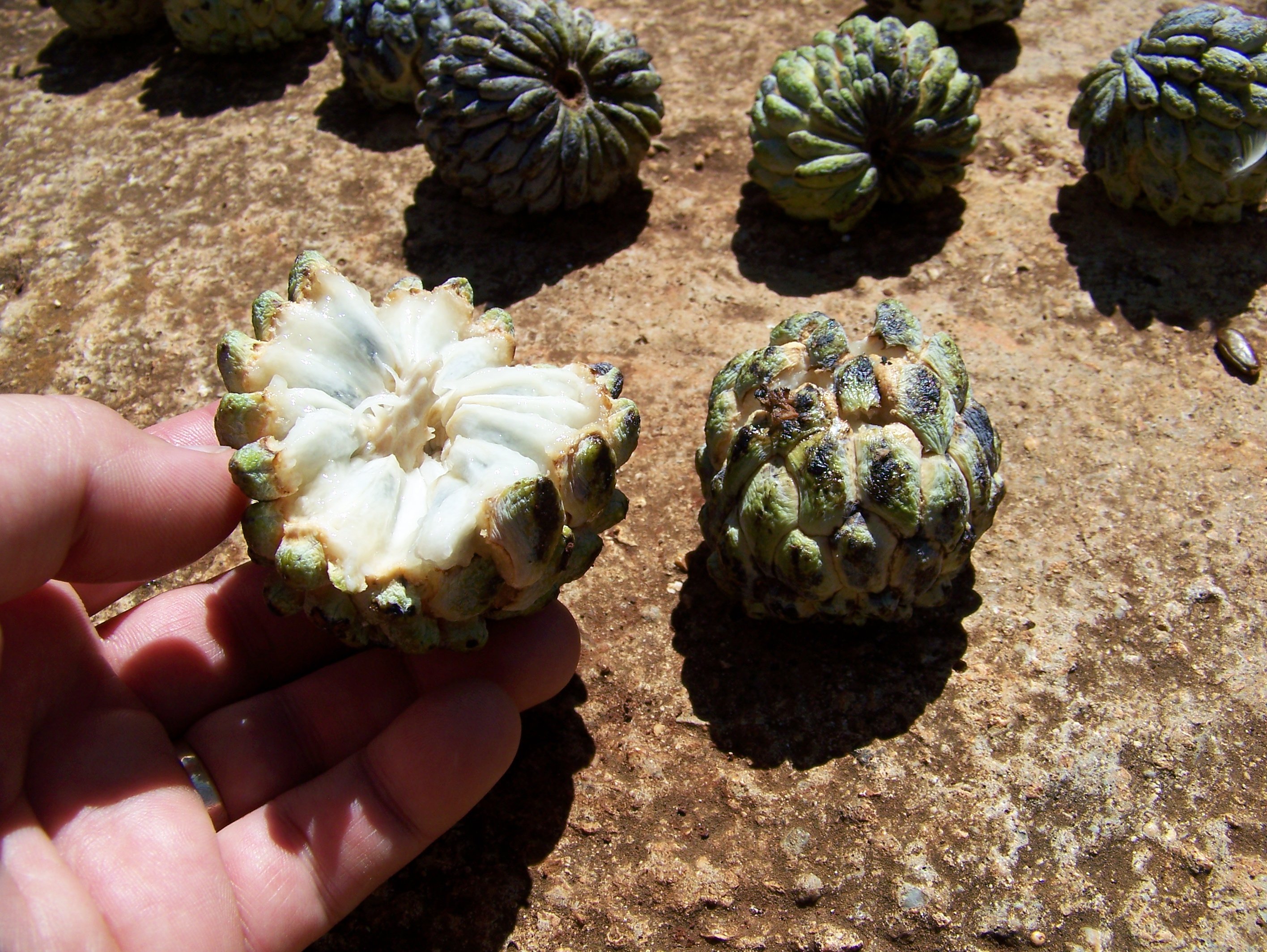
Sugar Apple
Row Crops and Grazing
Between the tree rows, various crops and grazing can be established. This could be rotated except where perennials are being established.

One of the best ways to build soil health is to manage grazers on it. This is done by moving cattle, sheep, goats or even pigs across the pasture, one small cell at a time. The idea is to mimic the movement of a herd, forcing the animals to eat what’s available in a small area without giving them enough time to graze down very far before moving them to the next cell. This provides the best nutrients for the animals, causes healthy disturbing of the plants and soil and fertilizes it in the process. The result if far more abundance than if the plants were left to grow without interruption.
Row crops would vary and be interspersed. While it’s nice to have one crop clustered together for convenience and harvesting, too broad of an area of monocrop encourages predation and is not healthy for the project as a whole. It’s better to break up rows, so that a row of corn might grow next to a row of beans and a row of squash. If they’re planted together, it’s called a guild, because they complement one another in terms of both structure and nutrients. There are many possible guilds that could be employed.
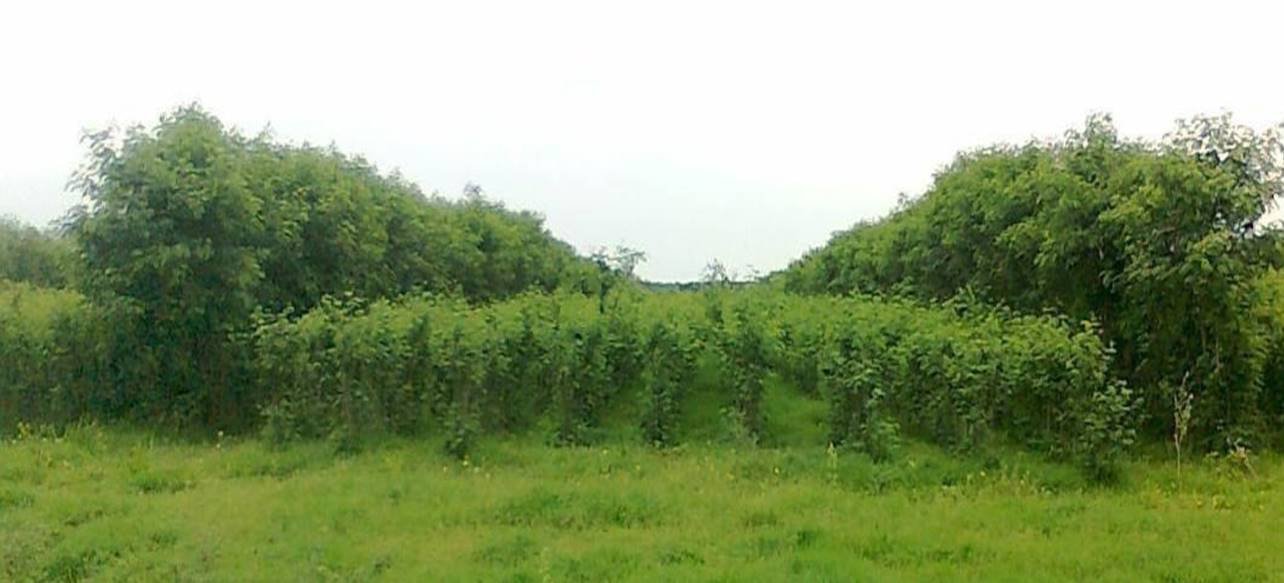
Determining which crops would work best is really going to require a lot of discussion and input. Ultimately, it’s the landowners’ decision. It’s their land and they have to live with the consequences of the decision. Also, they know what grows best among the crops accessible to them. While introducing ideas and making suggestions is good, imposing upon them and neglecting to embrace their experience and knowledge is not only arrogant, but foolish.
On the other hand, with enough research we might find that some crops will be more conducive to export, so we may encourage them to pursue those crops as well. There is a juggling act between trying to be as productive as possible and wanting to be careful not to introduce a species that could become aggressive on the island, or cause some other disruption.

Annuals need to be rotated too, in order to avoid depleting the soil. There is a general rule of thumb to plant roots followed by fruits followed by beans followed by greens, in order to replenish the nutrients that the successive plant needs. There are variations on this and much depends upon the current soil conditions as well as the specific crops available. From whatever crops are determined to be best, we’ll encourage the landowners to rotate in the way that helps promote the most health for the soil as well as complements the neighboring plantings. Ideally, they’ll work together in an attempt to avoid unnecessary competition and provide more varied options throughout the seasons.
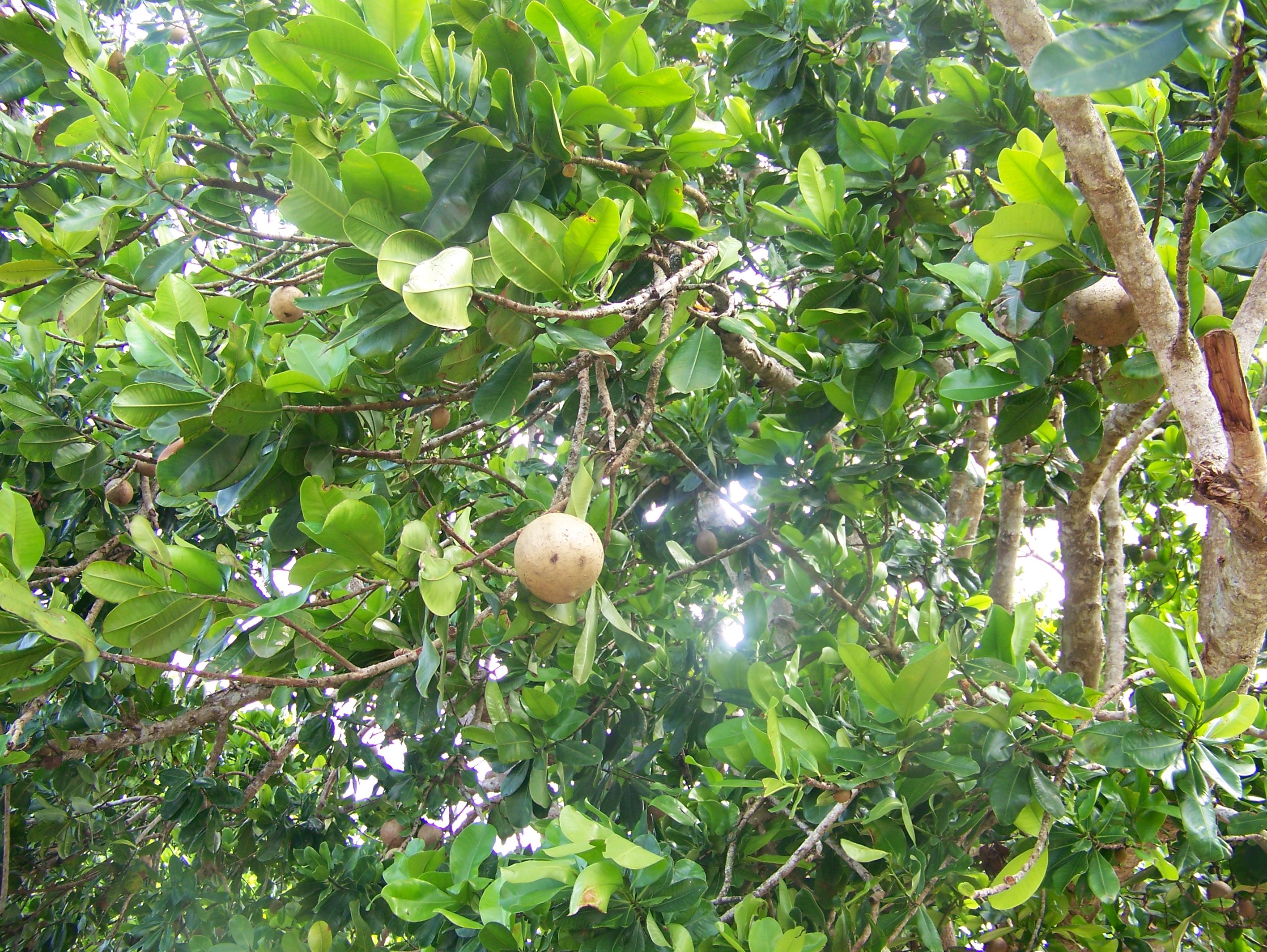
Abricot
I think my favorite fruit while there, second maybe to mango, was the abricot. It was a new experience for me, and a very interesting fruit. The flavor is hard to describe, sort of like an apricot and mango combination. It was somewhat firm, like a soft melon. You can see here as they scraped away the hard shell. As you can see, it’s pretty big. Interestingly, there are parts of a sort of second shell halfway between the pit (like a stone fruit) and the outer shell, though it doesn’t run all the way around.
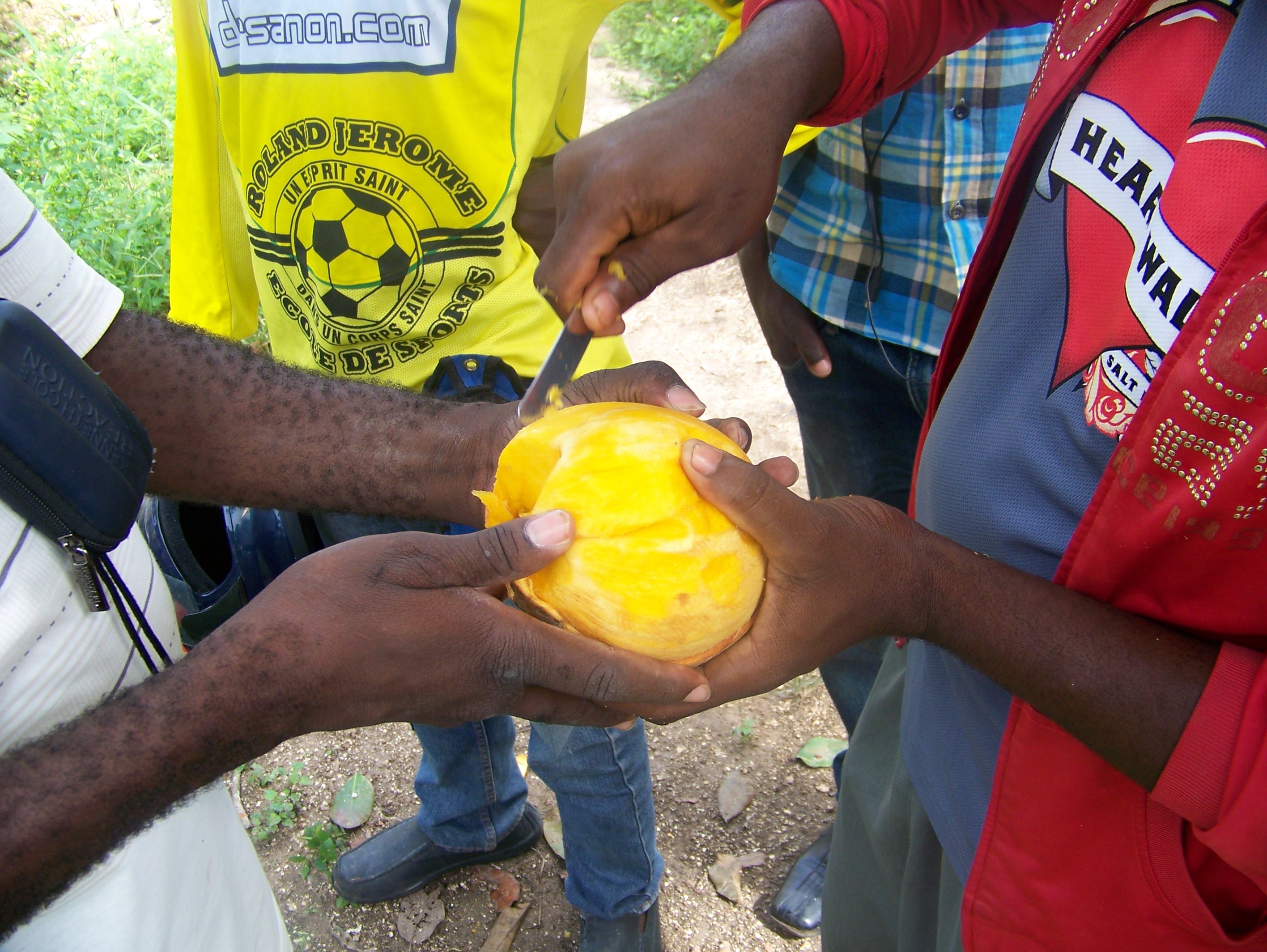
This seems hardy enough to make a great export. I'm sure they're in markets somewhere in the US, but I've not seen them. Of course, out in the sticks where I live isn't a great place to try to sell exotics. We'll talk about the business side in a couple of days though. Thanks for following along.
Steemin' on,
Another Joe

Email notifications
Facebook
Twitter

